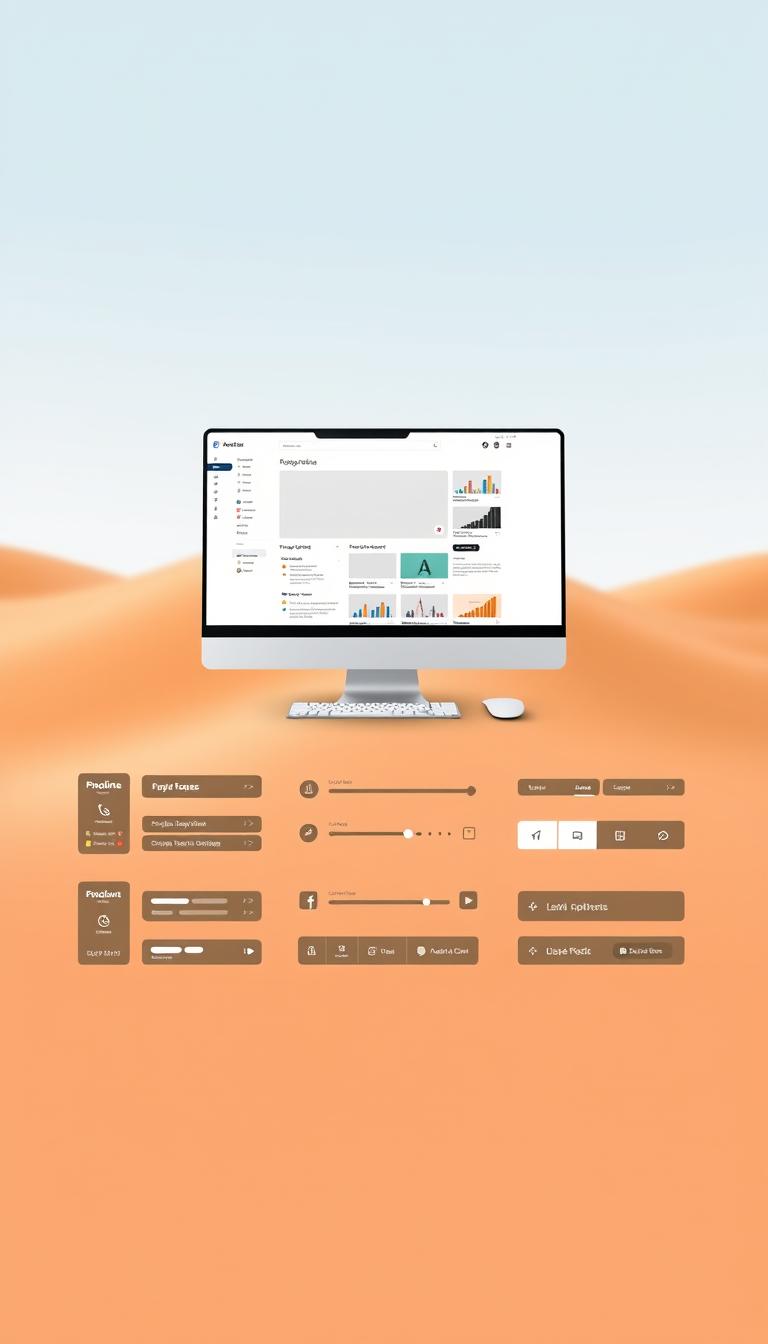
Imagine tapping into the expertise of seasoned traders. They help you make smart choices in the futures market. We’ve all been there – wanting to trade but feeling lost in the markets.
Automated futures trading is changing how we trade. It lets us follow the moves of top traders in real-time. This boosts our profits and helps us make better choices. It’s great for beginners who don’t want to do everything themselves.
Key Takeaways
- Replicate trades of experienced traders in real-time
- Boost returns and make informed decisions
- Ideal for beginners with less hands-on involvement
- Automated trading platforms make it more accessible
- Gain insights from successful traders’ strategies
What is Copy Trading in Futures?
In futures trading, copy trading is a popular choice for both new and experienced traders. It lets us follow professional traders through platforms. This way, we can let someone else make the trading decisions for us.
Understanding the Basics of Copy Trading
Copy trading in futures means copying the trades of skilled traders. It’s great for beginners or those who don’t have time to watch the markets all day. By using copy trading platforms for futures, we can follow successful investors and maybe do better in trading.
Here’s how it works: we look at a list of experienced traders on a copy trading platform. We pick one or more to follow based on their success and strategy. Then, the platform automatically makes the same trades in our account.
How Copy Trading Differs from Traditional Trading
Copy trading is different from traditional trading because it relies on others’ expertise. It’s good for those who are not sure or lack experience in making their own trading decisions.
“Copy trading allows you to benefit from the knowledge and experience of successful traders, potentially reducing the learning curve and emotional stress associated with trading.”
The main difference is the level of involvement. In traditional trading, you’re fully in charge of analyzing the market and making decisions. But with copy trading, you let others do the work. Still, you need to check that the trades fit your risk level and goals.
| Feature | Copy Trading | Traditional Trading |
|---|---|---|
| Decision Making | Copied from experienced traders | Trader makes their own decisions |
| Time Commitment | Less time-consuming | Requires constant market monitoring |
| Risk Management | Depends on the copied trader’s strategy | Trader manages their own risk |
Benefits of Copy Trading for Futures
Copy trading for futures has many benefits for traders at all levels. It lets people follow the trades of skilled professionals. This way, traders can use the knowledge of others.
Accessibility for New Traders
Copy trading makes trading easier for new traders. They can follow the moves of experienced traders. This way, they can learn a lot without needing to know everything about the market.
For instance, a beginner can start by copying a winning trader’s strategy. This hands-on learning helps build confidence and market understanding.
Learning from Experienced Traders
Copy trading is great for learning from pros. By watching how successful traders make decisions, you can learn a lot. You’ll get to know market trends and trading methods better.
Many platforms also let you see how well the traders you’re copying have done. This gives you insights into what makes their strategies work.
Reducing the Time Commitment
Copy trading also saves time. Traditional trading takes a lot of time to watch markets, analyze data, and make decisions.
By copying others, you can still be in the markets without spending hours. This is great for those with little time or experience.
| Benefits | Description |
|---|---|
| Accessibility | Makes trading more accessible to new traders by allowing them to copy experienced traders. |
| Learning Opportunities | Provides traders with the chance to learn from successful traders and gain market insights. |
| Time Efficiency | Reduces the time commitment required for trading by automating the process. |
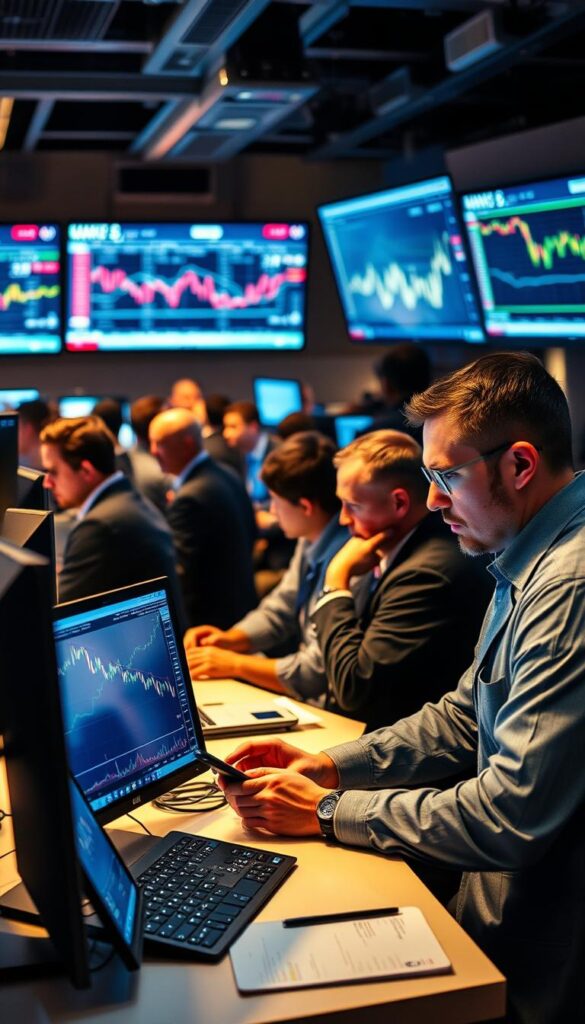
In conclusion, copy trading for futures has many benefits. It helps both new and experienced traders. Whether you’re starting out or looking to try new things, copy trading is a good option.
How Copy Trading Platforms Work
Copy trading platforms for futures make trading easier. They let users follow and copy successful traders’ strategies. This makes the futures market more accessible to more investors.

⭐️ Tap the exclusive deal link https://temu.to/k/uot8tcxvwum to score top-quality items at ultra-low prices. 🛍️ These unbeatable deals are only available here. Shop now and save big! ⭐️ Directly get exclusive deal in Temu app here: https://app.temu.com/m/mhb5rstagbx
Another surprise for you! Click https://temu.to/k/uag0bn0o0wd to earn with me together🤝!
Overview of Popular Platforms
Many copy trading platforms are popular among futures traders. For example, CopyRack lets you follow top traders and earn automatically. It’s important to know what each platform offers and how it meets your trading needs.
When looking at popular copy trading platforms, consider these key points:
- The variety of traders and strategies available
- The platform’s user interface and experience
- The fees and costs involved
- The risk management tools provided
Key Features to Look For
When choosing a copy trading platform, look for certain features. These ensure the platform meets your trading goals. Key features include:
- Transparency: The platform should clearly show trader information, like performance and risk levels.
- Customization: Choose platforms that let you adjust your trading settings, like stop-loss levels.
- Performance Metrics: The platform should offer detailed performance data for the traders you’re copying.
- Risk Management Tools: Look for platforms with strong risk management tools to help manage losses.
Understanding how copy trading platforms work and what features to look for helps you make better choices. This is crucial when starting or improving your futures trading journey.
Getting Started with Copy Trading
Starting with copy trading means picking the right trader is key. Futures copy trading lets you follow experienced investors’ trades. This could boost your earnings. But, knowing the steps is crucial.
Choosing the Right Trader to Copy
Choosing a trader can be tricky. It’s easy to focus too much on their past results. But, other factors matter too, like the risks they take. Look at their risk management strategies and trading philosophy to match your goals.
Here are key things to consider:
- Trader’s past performance
- The risks of their trades
- How consistent their strategy is
- How open they are about their trading

Setting Up Your Account
After picking a trader, set up your account on a copy trading platform. You’ll need to create an account, add funds, and set up your copy trading settings. Start with a demo account to learn the platform and test strategies without losing money.
| Platform Feature | Description | Importance Level |
|---|---|---|
| Copy Trading Settings | Allows customization of trades to be copied | High |
| Risk Management Tools | Features to limit potential losses | High |
| Performance Analytics | Detailed statistics on trader performance | Medium |
Understanding Fees and Costs
Knowing the fees for copy trading for futures strategies is vital. These include platform fees, trader fees, and other costs. Always check the fees of your chosen platform to avoid surprises.
To save money, do this:
- Compare fees on different platforms
- Check how traders’ fees compare to their performance
- Keep an eye on your costs
By picking the right trader, setting up your account well, and knowing fees, you can do well in best copy trading for futures. Stay informed and adjust your strategy as needed in the fast-paced world of futures copy trading.
Risks Involved in Copy Trading
Copy trading lets new traders follow the moves of experienced ones. It’s key to know the risks when using copy trading platforms for futures. This way, you can move through this space safely.

Market Volatility Impacts
Market volatility is a big risk in copy trading. The futures market changes fast due to many factors. These changes can cause big losses if not handled right.
To deal with market ups and downs, traders use futures trading signals. These signals help make smart choices. They show trends and when to enter or leave the market.
Reliance on Other Traders’ Decisions
Another risk is relying on other traders’ choices. Even if you’re copying successful ones, there’s a chance they might make a mistake. This can lead to unexpected losses.
It’s important to pick traders to copy carefully. Look at their past success, risk level, and strategy. Using automated futures trading systems can also help. It makes trading more efficient and less dependent on manual decisions.
Mitigating Risks in Copy Trading
Risks in copy trading can be managed. Diversifying and setting stop-loss orders can help. Also, keep an eye on the traders you’re copying and adjust your strategy as needed.
Knowing the risks and using good risk management can make copy trading safer. It’s about finding a balance between making money and keeping your investments safe.
Strategies for Successful Copy Trading
Exploring copy trading for futures shows that a good strategy is crucial. It’s not just about copying trades; it’s about planning, managing risks, and checking progress. This approach helps you succeed in the futures market.
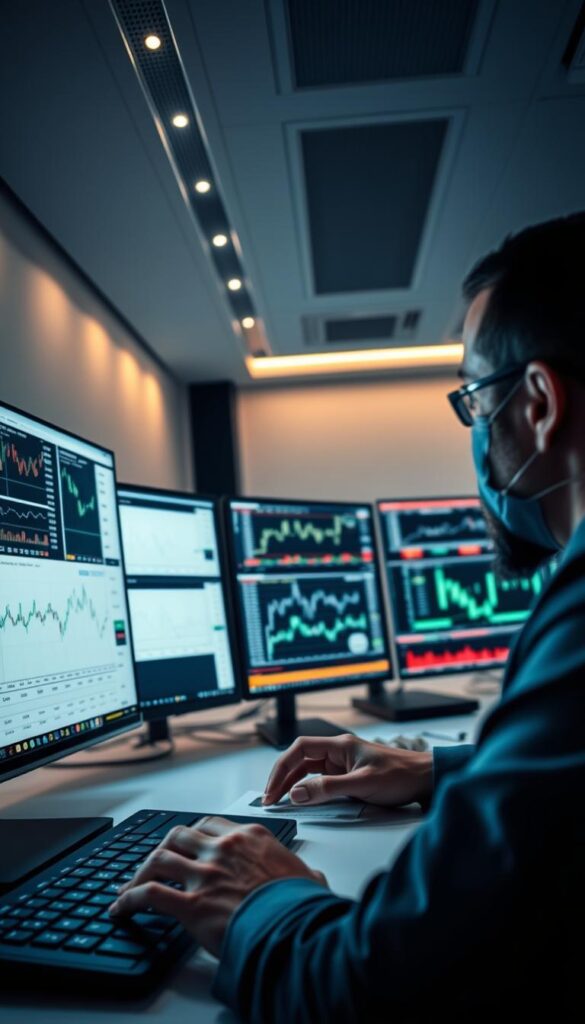
Diversification of Traders
Diversifying the traders you follow is a smart move. Spreading your investment across different traders with various strategies and risk levels can protect your portfolio. Platforms like CopyRack let you follow many traders at once. This way, you can build a more stable portfolio over time.
Setting Realistic Expectations
It’s important to have realistic expectations in copy trading. Remember, returns are not guaranteed, and losses can happen. Knowing the risks and rewards helps you make better choices about who to follow and how to invest.
Regularly Reviewing Performance
Checking the performance of the traders you follow regularly is key. It’s not just about their success but also understanding their trade decisions. By staying updated and adjusting your strategy, you can improve your chances of success in the futures market.
In summary, successful copy trading for futures requires diversification, realistic expectations, and regular performance checks. By using these strategies, traders can increase their chances of success in the dynamic futures market.
Copy Trading vs. Manual Trading
Futures trading can be done in two ways: copy trading or manual trading. Copy trading means following the moves of experienced traders. Manual trading lets you make your own choices. Each method has its own benefits and drawbacks, which we’ll look at here.

Pros and Cons of Each Approach
Copy trading, especially in automated futures trading, is easy for beginners. It lets you follow the steps of skilled traders and possibly earn money. But, you have to rely on others, which can be a problem if their trades fail.
Manual trading gives you full control over your trades. You can use futures trading algorithms or your own judgment. The big plus is being able to quickly adjust to market changes. But, it takes a lot of time, knowledge, and experience to succeed.
When looking at copy trading platforms for futures, think about the traders’ past performance, the platform’s fees, and how transparent it is.
When to Consider Manual Trading
Manual trading is best for those who really know the futures market and have time to trade. It’s also good if you want to use your own futures trading algorithms or strategies. Starting with manual trading in a demo account can help you learn.
Choosing between copy trading and manual trading depends on your goals, how much risk you’re willing to take, and your trading skills. Knowing the good and bad of each can help you decide what’s best for you.
Case Studies: Successful Copy Trading Examples
Looking at real-life examples can teach us a lot about futures copy trading. Successful traders often have strategies we can learn from. By studying their methods, we can get better at trading.
Insights from Notable Traders
Many notable traders in futures copy trading share their strategies. They teach us valuable lessons. For example, some traders spread their investments across different assets to reduce risk.
Some key strategies used by successful traders include:
- Focusing on high-probability trades
- Using technical analysis to spot trends
- Keeping a strict risk management plan
Lessons Learned from Mistakes
Even top traders make mistakes, but it’s how they learn from them that’s key. A big lesson is not to over-leverage your account. This can cause big losses.
Traders have also learned the importance of:
- Staying up-to-date with market conditions
- Adjusting strategies as the market changes
- Being patient and disciplined in trading
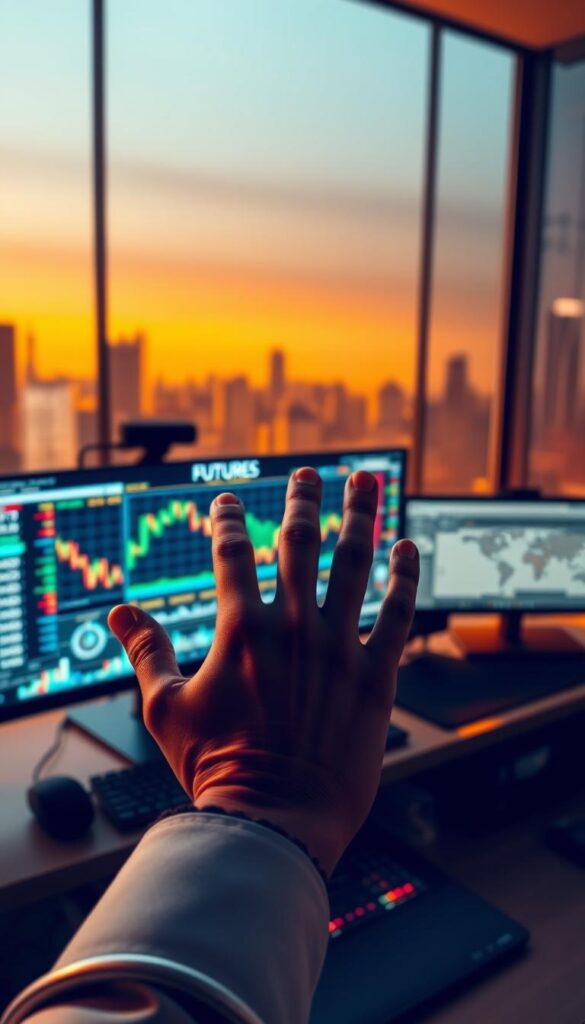
In conclusion, by studying successful cases and learning from both wins and losses, we can improve our trading. This way, we not only understand the markets better but also increase our chances of success.
Regulatory Considerations and Legal Aspects
The rules for copy trading in futures are complex. It’s key for traders to know these rules well. We’ll look at the laws in the U.S. and what they mean for traders.
Understanding Compliance in the U.S.
In the U.S., copy trading platforms for futures face strict rules. The Commodity Futures Trading Commission (CFTC) and the National Futures Association (NFA) keep an eye on things. They make sure trading is fair and open.
To follow U.S. laws, traders must pick registered and compliant copy trading platforms. They need to check if the platform is registered with the right groups. They also need to know the platform’s rules on automated futures trading and futures trading algorithms.
| Regulatory Body | Role | Key Regulations |
|---|---|---|
| Commodity Futures Trading Commission (CFTC) | Oversees futures trading and commodity derivatives | Registration requirements for traders and platforms |
| National Futures Association (NFA) | Self-regulatory organization for futures industry | Compliance rules for futures trading, including copy trading |
Important Regulations for Traders
Traders need to know several important rules. They must understand the risk disclosure statements from the platform. They also need to know the margin requirements for futures contracts. And they must follow anti-money laundering (AML) regulations.
Traders should also learn about the rules for futures trading algorithms and automated trading systems. They need to know how these systems are regulated in the U.S.
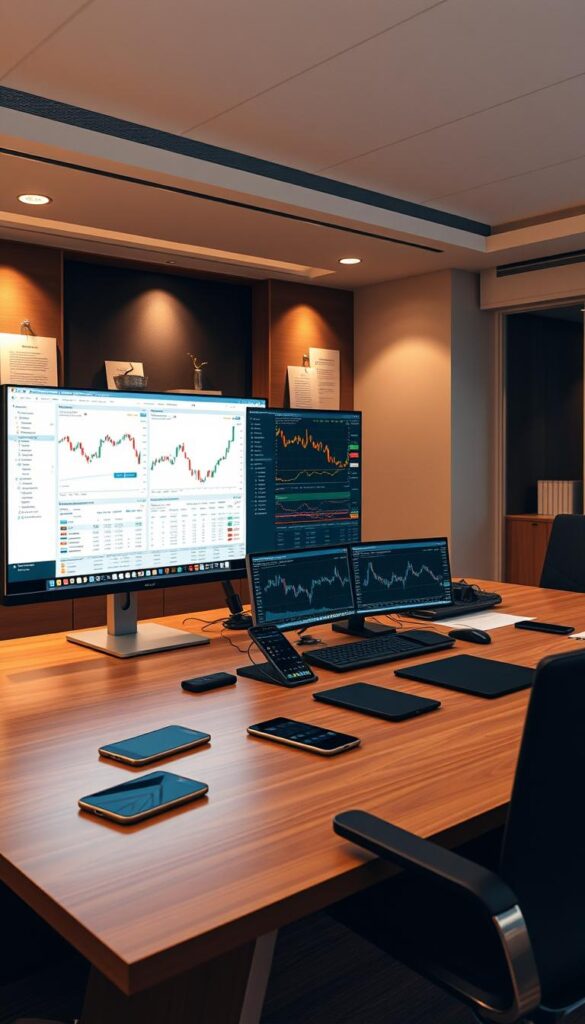
By following these rules, traders can make sure their copy trading is legal in the U.S. This helps avoid risks and legal problems.
The Future of Copy Trading in the Futures Market
The future of copy trading for futures looks bright. New trends and tech advancements are driving this growth. It’s key to keep up with these changes in the industry.
Emerging Trends to Watch
Futures trading signals are becoming more popular. They help traders make better choices, leading to improved results. Top platforms are adding these signals to their services, offering a stronger trading experience.
Impact of Technology
Technology is changing copy trading for futures a lot. AI and machine learning are making trading signals more accurate. They also help manage risks better. As tech gets better, trading platforms will get more efficient and easy to use.
By keeping up with new trends and tech, traders can do well in the futures market. Whether you’re experienced or new, staying current is vital for success in copy trading for futures.
